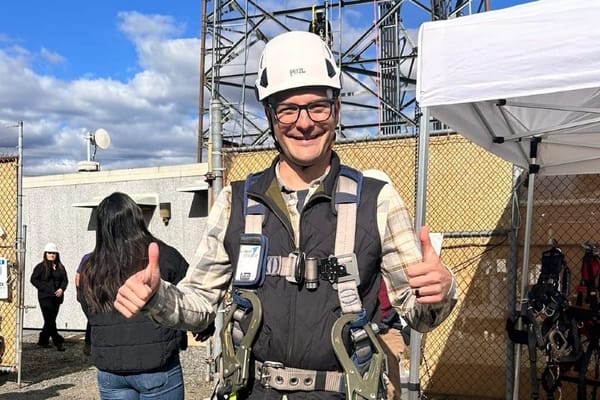David Strauss: How Will State Broadband Offices Score BEAD Applications?
Fiber, coax and fixed wireless network plans dependent on BEAD funding demand scrutiny.
Broadband Breakfast

Given the vital ways in which access to broadband enables America, adequate Internet for all is a necessary and overdue undertaking. To help close the digital divide, the Infrastructure Investment and Jobs Act includes $42.5 billion in Broadband Equity, Access and Deployment funding for the last mile. Add to this the estimated level of subgrantee matching funds and the total last mile figure rises to $64 billon, according to the BEAD Funding Allocation and Project Award Framework from ACA Connects and Cartesian.
The federal funds will be disbursed by the Department of Commerce’s National Telecommunications and Information Administration to the State Broadband Offices who will then award subgrants to service providers. On June 30, each state will find out their allocation amount. By 2024, the states will establish a competitive subgrantee process to start selecting applicants and distributing funds.
A critical element of the selection process is the methodology for scoring the technical merits of each subgrantee and their proposal. Specific assessment criteria to be used by each state are not yet set. However, the subgrantee’s network must be built to meet these key performance and technical requirements:
- Speeds of at least 100 Megabits per second (Mbps) download and 20 Mbps upload
- Latency low enough for “reasonably foreseeable, real-time interactive applications”
- No more than 48 hours of outage a year
- Regular conduit access points for fiber projects
- Begin providing service within four years of subgrant date
What level of scrutiny will each state apply in evaluating the technical merits of the applicants and their plans?
Based on our conversations with a number of state broadband leaders, the answers could be as varied as the number of states. For example, some states intend to rigorously judge each applicant’s technical capability, network design and project readiness. In contrast, another state believes that a deep upfront assessment is not needed because the service provider will not receive funds until certain operational milestones are met. Upon completion, an audit of the network’s performance could be implemented.
We, at Broadband Success Partners, are a bit biased about the level of technical scrutiny we think the states should apply. Having assessed over 50 operating and planned networks for private sector clients, we appreciate the importance of a thorough technical assessment. Our network analyses, management interviews and physical inspections have yielded a valuable number of dos and don’ts. By category, below are some of the critical issues we’ve identified.
Network Planning & Design
- Inadequate architecture, lacking needed redundancy
- Insufficient network as-built diagrams and documentation
- Limited available fiber with many segments lacking spares
Network Construction
- Unprotected, single leased circuit connecting cities to network backbone
- Limited daisy-chained bandwidth paths on backhaul network
- Lack of aerial slack storage, increasing repair time and complexity
Network Management & Performance
- Significant optical ground wire plant, increasing potential maintenance cost
- Internet circuit nearing capacity
- Insufficient IPv4 address inventory for planned growth
Equipment
- Obsolete passive optical network equipment
- Risky use of indoor optical network terminals in outdoor enclosures
- Sloppy, untraceable wiring
Technical Service / Network Operations Center
- Technical staff too lean
- High labor rate for fiber placement
- Insufficient NOC functionality
While the problems we uncover do not always raise to the level of a red flag, it happens often enough to justify this exercise. Our clients who invest their own capital in these networks certainly think so. The same should hold true for networks funded with taxpayer money. Fiber, coax and fixed wireless network plans dependent on BEAD funding demand serious scrutiny.
David Strauss is a Principal and Co-founder of Broadband Success Partners, the leading broadband consulting firm focused exclusively on network evaluation and technical due diligence. This piece is exclusive to Broadband Breakfast.
Broadband Breakfast accepts commentary from informed observers of the broadband scene. Please send pieces to commentary@breakfast.media. The views reflected in Expert Opinion pieces do not necessarily reflect the views of Broadband Breakfast and Breakfast Media LLC.







